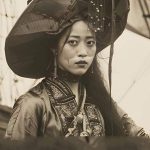In the sea of old photographs across the world, some are so extraordinary, capturing moments that transport us to a bygone era that reveals glimpses of lives lost to time.
These silent witnesses to history hold untold stories and paint vivid pictures of experiences that will never grace our Earth again.
In this article, we’ve compiled a collection of the most captivating historical photographs and revealed truths behind them.
1. Lipstick testing
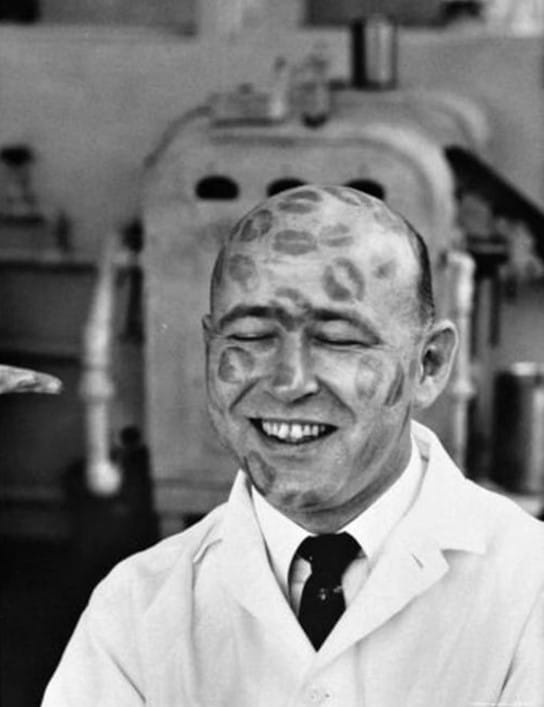
Back in the 1950s, when a laboratory testing lipsticks gather a group of volunteer women. to conduct a test for their product.
These women would all take turns kissing a random bald man. The lipstick would be put on their lips, and then they would kiss the man.
They were checking to see how much color stayed on his lips after the kiss, how much ended up on his skin, and if his skin reacted to the lipstick.
Sometimes, bald men were even brought into big lipstick factories to help test new products as “live dummies.”
2. Robin Williams dressed as a cheerleader, 1979.
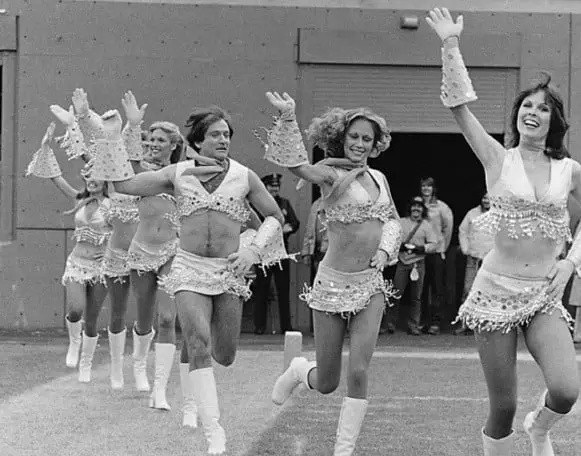
On Nov. 12, 1979, during a game between the Broncos and the Patriots at Mile High Stadium, the crowd erupted in cheers as the cheerleaders made their entrance onto the field.
Amidst the excitement, observers noticed a new face among the team. In front of a live audience of over 70,000 fans, Robin Williams joined the Broncos cheerleaders, donning their sparkling uniforms and knee-high cowboy boots.
3. Alice Liddell — the little girl who was the inspiration for Lewis Caroll’s famous novel, Alice’s Adventures in Wonderland.

Lewis Caroll was drawn to Alice, an eight-year-old with captivating dark features and stylish clothes that made her “rather like a well-dressed doll”.
Alice’s attire, including a worn white dress, exuded a flirtatious charm with its off-the-shoulder style.
4. Einstein on the beach, 1939.
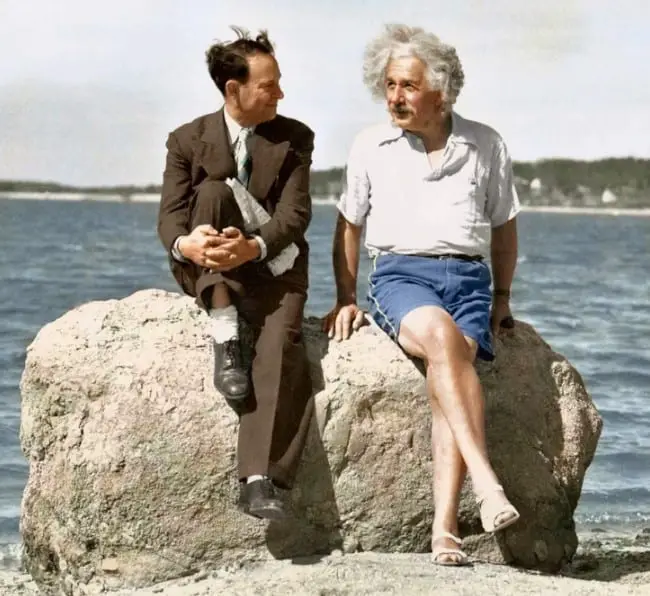
In the summer of 1939, there’s a photo of Einstein chilling on the beach near his summer house in Long Island. He was hanging out with his buddy David Rothman, who owned a department store nearby.
While David was still wearing his work clothes, Albert Einstein was dressed for the beach.
5. Miss New Zealand falls unconscious during the ’Miss Universe’ competition, 1954.
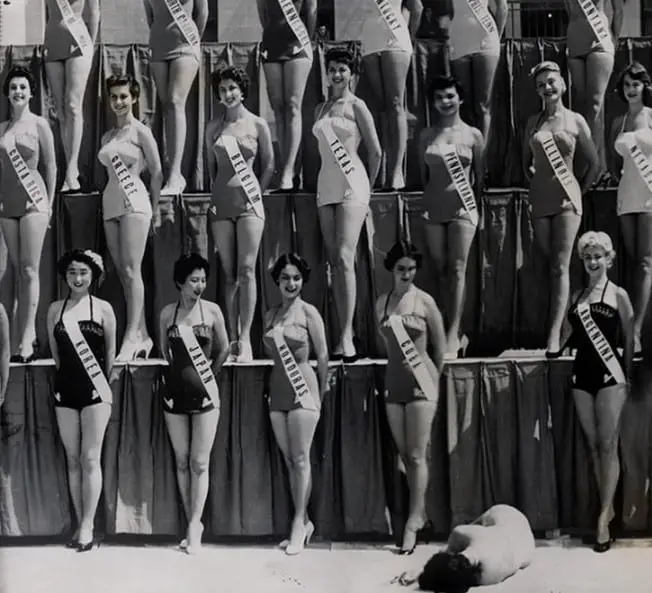
In 1954, during the Miss Universe Pageant in Long Beach, California, Miss New Zealand, Moana Manley, passed out during a photo shoot.
Some say it was due to heat exhaustion, but it wasn’t particularly hot that day, around 72 degrees Fahrenheit (22 degrees Celsius).
It’s more likely she fainted from stress. She was the first woman from New Zealand and of Maori descent to compete in Miss Universe, so there was a lot of pressure on her.
6. The polar explorer Peter Freuchen with his partner, 1947.
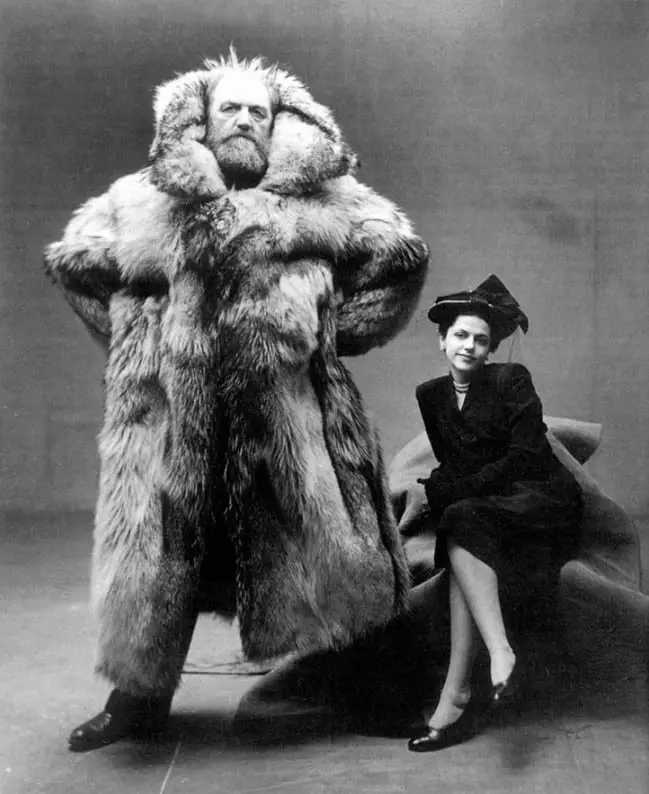
In a beguiling photo taken by Irving Penn in 1947, you’ll see a remarkable sight: a tall, imposing man with just one leg, wrapped in a bearskin cloak, and a mysterious woman by his side.
The towering Viking is Peter Freuchen, and the woman at his side is his third wife, Dagmar Cohn.
At a striking height of six feet seven inches, Peter Freuchen was a true giant, both physically and in his adventurous spirit.
7. Test pilot George Aird ejects from his plane after he loses control.
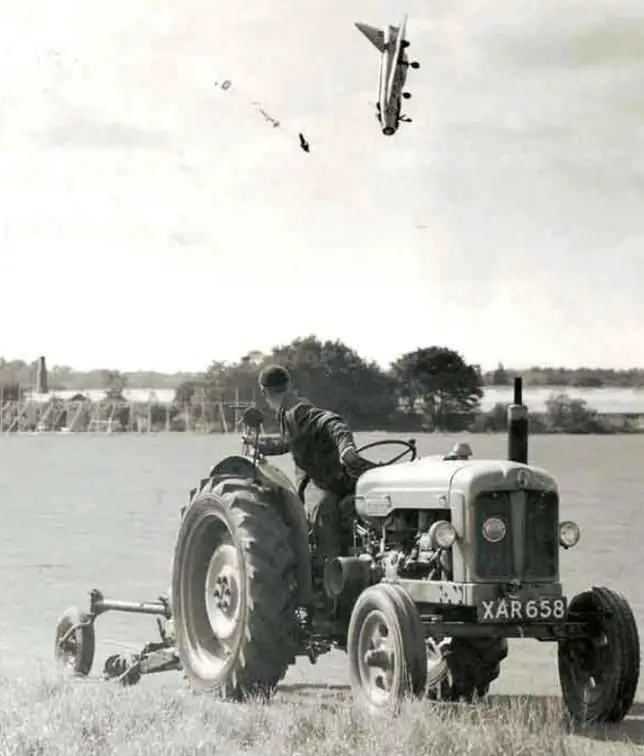
On 13th September 1962, test pilot George Aird, flying an English Electric Lightning F1, ejected from his English Electric Lightning F1 aircraft at a fantastically low altitude in Hatfield, Hertfordshire.
Jim lived next door to Bob Sowray, a test pilot for de Havilland, in Hatfield. One day, both of their wives went shopping in London. Bob mentioned he would fly a Lightning that day.
Later, Jim’s kids asked to watch the flight. Jim, who usually didn’t take his camera on outings, decided to bring it this time to capture his neighbor flying. The camera he took had only two exposures left.
In fact, the Lightning plane became difficult to control because a part that helps move the tail was damaged after an engine fire. Luckily, the pilot survived by landing in a greenhouse filled with tomatoes.
Even though he broke several bones and got cut by glass from the greenhouse roof, he made it out alive. Interestingly, it wasn’t Bob Sowray flying the plane that day; he let his colleague George Aird take the controls.
This incident was featured in an article called “The Story Behind a Famous Photo of an Ejection from a Lightning” Issue 5 – English Electric Lightning of Aviation Classic. The photo made headlines worldwide and got the attention of the manufacturer, Martin-Baker.
8. The as-yet unknown Robin Williams (right) in Central Park, 1974.
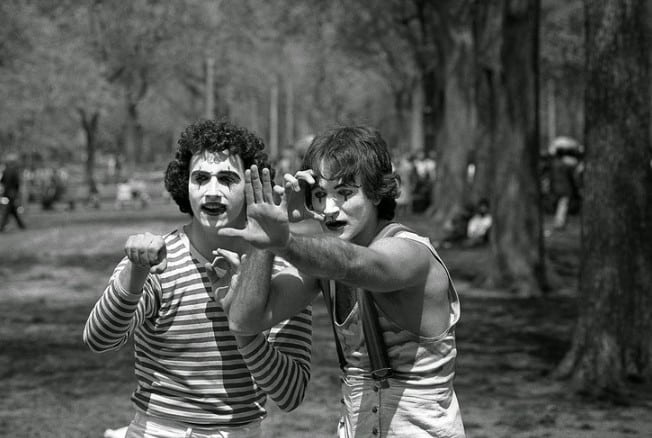
In 1974, there was a photographer named Daniel Sorine strolling around New York City. One day, while he was in Central Park, he stumbled upon two mimes.
Interestingly, one of those mimes was none other than Robin Williams! It turns out that Williams was studying at Juilliard acting school back then. He was just out and about in NYC, honing his mime skills.
9. Testing a rugby helmet, 1912.
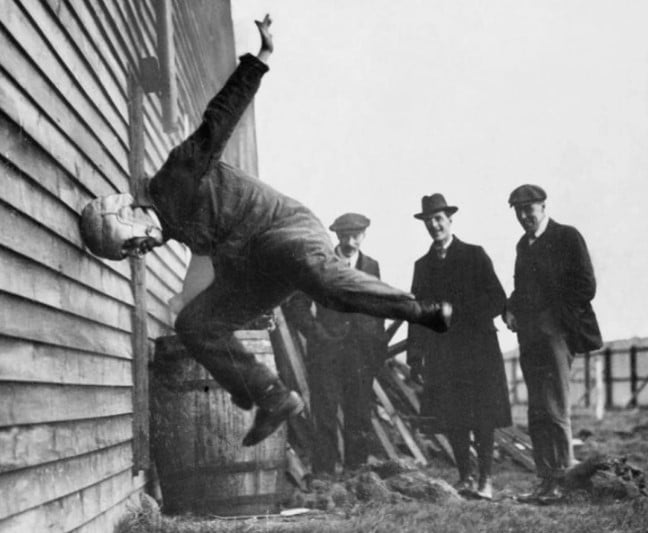
The picture of the guy flying comes from an article in Flight, a British magazine about airplanes, from April 6, 1912.
The man in the other picture hitting his head against the wall is W. T. Warren, an English guy learning to fly planes which looked a lot like the ones the Wright Brothers flew.
These planes didn’t have the fancy cockpits or bodies like they do now, so crashes were pretty common. Warren wasn’t worried about American football players’ heads; he was worried about English pilots. In his article in Flight, Warren talks about the helmet he made, tests he did, and shows two pictures of it all.
10. Players from the Toronto Maple Leafs and Chicago Black Hawks search for contact lenses lost by Jack Evans, 1962.
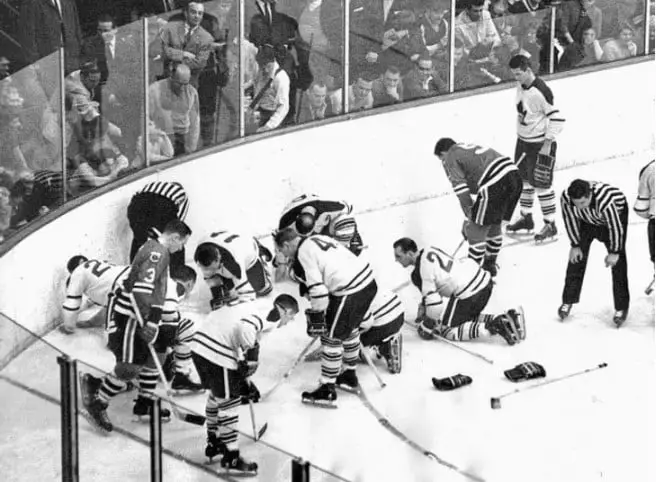
In March 1962, Toronto was at the old Chicago Stadium to play the Black Hawks. The game was “brisk, boisterous”, with the Leafs eventually winning 3-2. Nevin scored the first goal just three minutes into the opening period.
Then, six minutes into the second period, he lost a contact lens from his left eye during a play. Players from both teams dropped to hands and knees searching for the lenses but they never were found.
11. Acrobats perform on the Empire State Building, 1934.
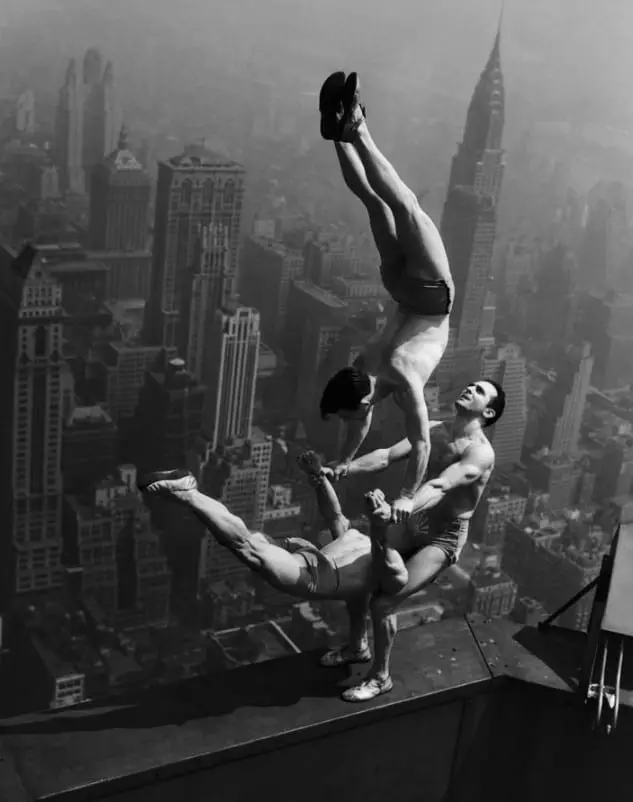
The fearless ‘Three Jacksons,’ acrobats, Jarley Smith, Jewell Waddek, and Jimmy Kerrigan shocked the world on August 21, 1934, by performing a daring balancing act on the 86th floor ledge of the Empire State Building in Manhattan.
Without any safety harnesses, Jarley Smith, Jewell Waddek, and Jimmy Kerrigan showcased their incredible skills 1,050 feet above the ground, relying solely on their precision and balance.
Perhaps the only people who can come close to understanding the rush these acrobats experienced are the men who built the Empire State Building or maybe the window cleaners.
After their awe-inspiring performance, the ‘Three Jacksons’ gained fleeting fame and were even invited to repeat their daring act.
To this day, they hold the distinction of being the only individuals permitted to attempt such a feat on the iconic Empire State Building.
12. Sound-proof booths for listening to music in a shop, 1955.
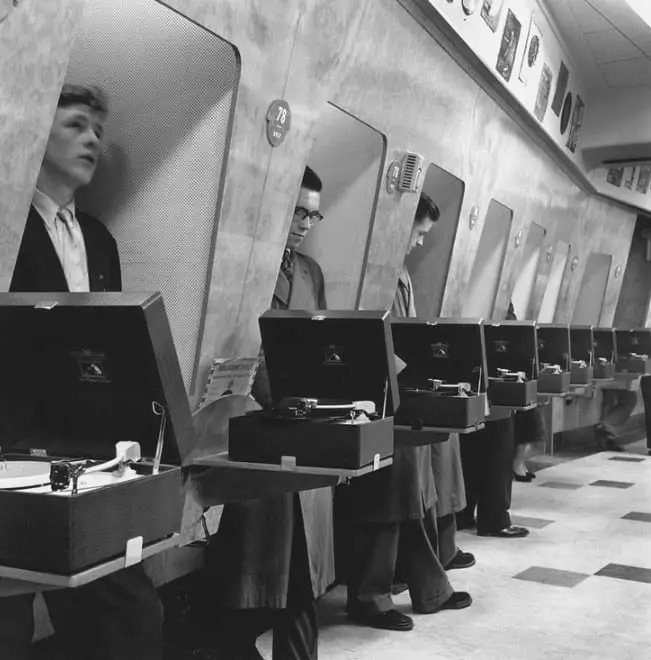
In the past, before smartphones made it easy to listen to new songs with earphones, music stores in the 1950s came up with a neat idea.
They set up special booths where people could enjoy new music without needing headphones.
Back in the ’50s and ’60s, when 45-rpm vinyl singles were all the rage, lots of small, family-owned record stores had these booths.
They had turntables, headphones, and sample singles so customers could try out different songs before buying them. It was a cool way to pick out the tunes you liked best.
13. Ducklings used as therapy animals, 1956.
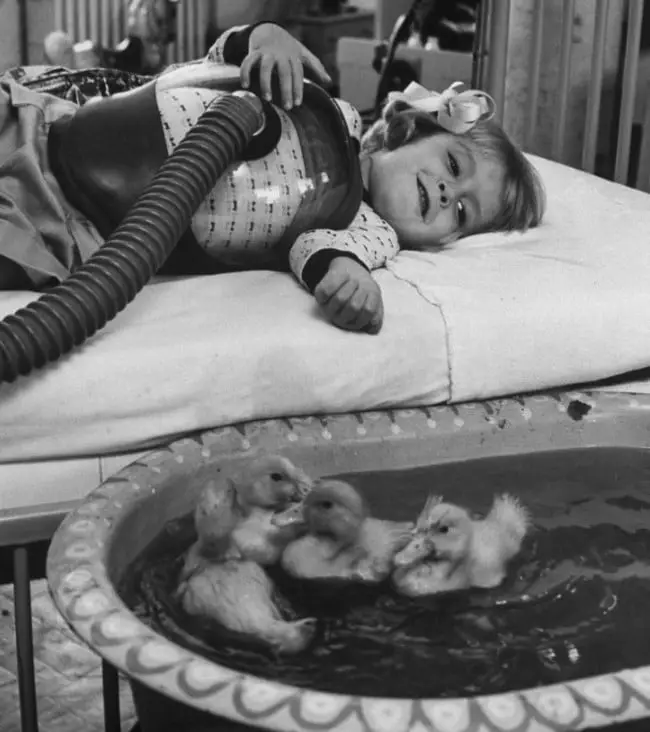
This photo featured Peggy Kennedy, a three-year-old girl, who was seen happily watching ducklings swimming in a tub. Peggy had polio so she had to wear a plastic chest respirator.
In November 1956, LIFE magazine put out an article with the deceptively lighthearted title, “Animals Make a Hospital Happy.” Noting that children, especially, are acutely aware of “how depressing it is to be in a hospital . . . the University of Michigan’s hospital at Ann Arbor runs a perpetual animal show which is enjoyed by the 3,000 children who pass annually thought its wards.”
14. Class difference in Great Britain in 1937.
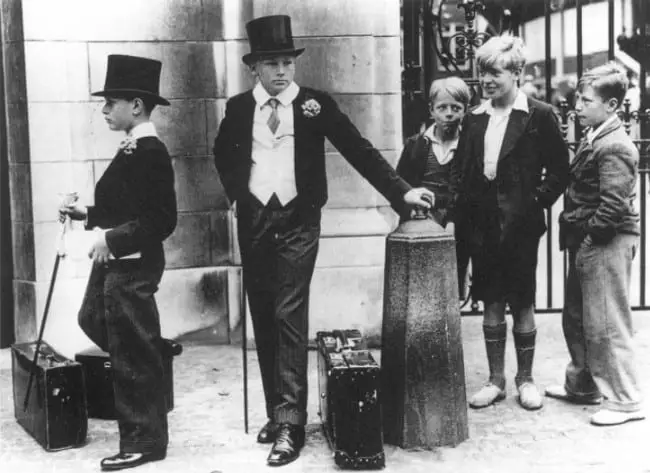
This old photo was apparently taken back in 1937 by an unknown photographer. It is a “shocking” example of class difference in society in the 20th century.
In the picture, we see well-to-do young boys, while three other boys, likely from a lower social class, observe them.
15. The largest horse in the world, 1928.
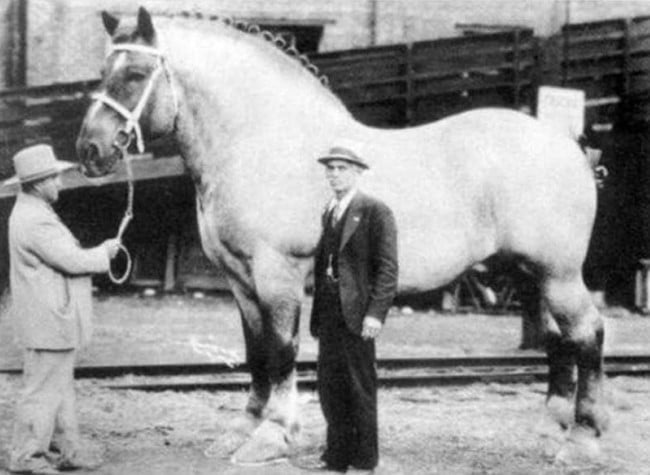
Brooklyn “Brookie” Supreme was a big red roan Belgian horse, born on April 12, 1928, and died on September 6, 1948. People often argue, but some think he might be the world’s biggest horse in terms of weight, not height.
He was also known as the heaviest horse globally. He stood 19.2 hands (around 198 cm) and weighed a whopping 3,200 pounds (1,451.5 kg).
His girth, which is the measurement around his body, was about 10 feet 2 inches. He was born on a farm in Brooklyn Center, Minnesota, owned by Earle Brown, who showcased him to the public.

